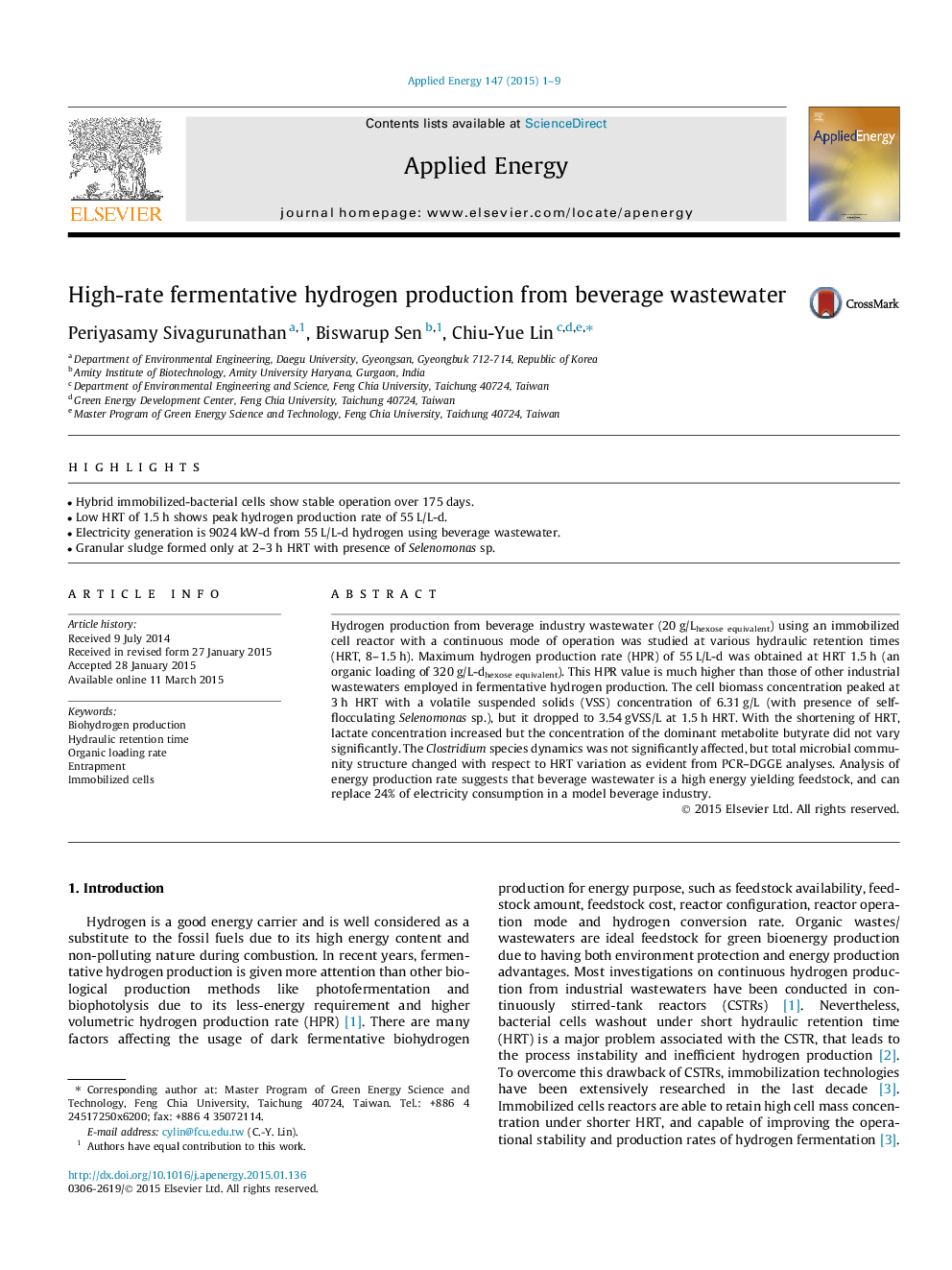| Article ID | Journal | Published Year | Pages | File Type |
|---|---|---|---|---|
| 6687363 | Applied Energy | 2015 | 9 Pages |
Abstract
Hydrogen production from beverage industry wastewater (20Â g/Lhexose equivalent) using an immobilized cell reactor with a continuous mode of operation was studied at various hydraulic retention times (HRT, 8-1.5Â h). Maximum hydrogen production rate (HPR) of 55Â L/L-d was obtained at HRT 1.5Â h (an organic loading of 320Â g/L-dhexose equivalent). This HPR value is much higher than those of other industrial wastewaters employed in fermentative hydrogen production. The cell biomass concentration peaked at 3Â h HRT with a volatile suspended solids (VSS) concentration of 6.31Â g/L (with presence of self-flocculating Selenomonas sp.), but it dropped to 3.54Â gVSS/L at 1.5Â h HRT. With the shortening of HRT, lactate concentration increased but the concentration of the dominant metabolite butyrate did not vary significantly. The Clostridium species dynamics was not significantly affected, but total microbial community structure changed with respect to HRT variation as evident from PCR-DGGE analyses. Analysis of energy production rate suggests that beverage wastewater is a high energy yielding feedstock, and can replace 24% of electricity consumption in a model beverage industry.
Keywords
Related Topics
Physical Sciences and Engineering
Energy
Energy Engineering and Power Technology
Authors
Periyasamy Sivagurunathan, Biswarup Sen, Chiu-Yue Lin,
